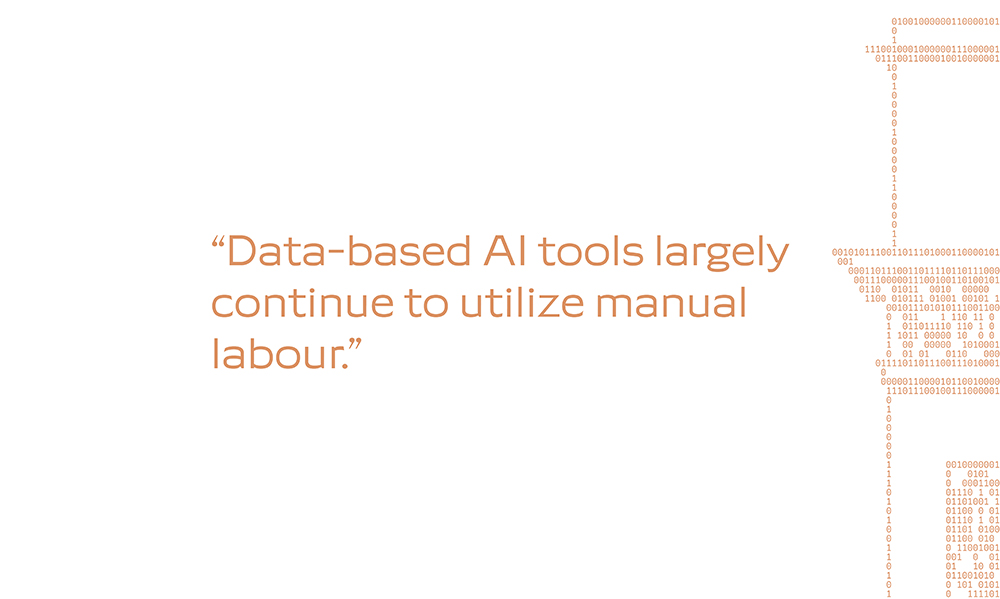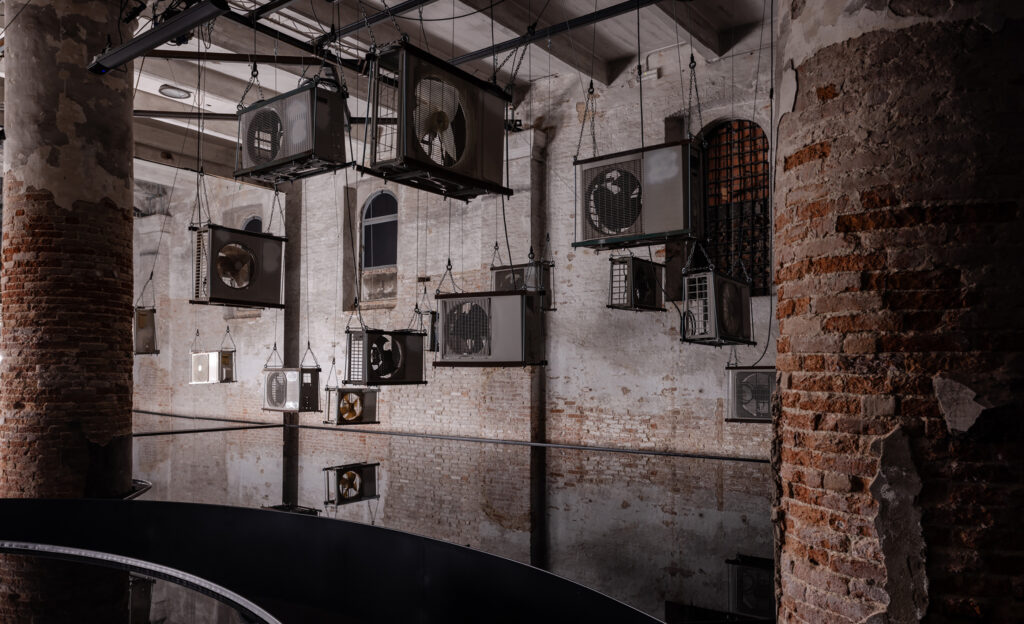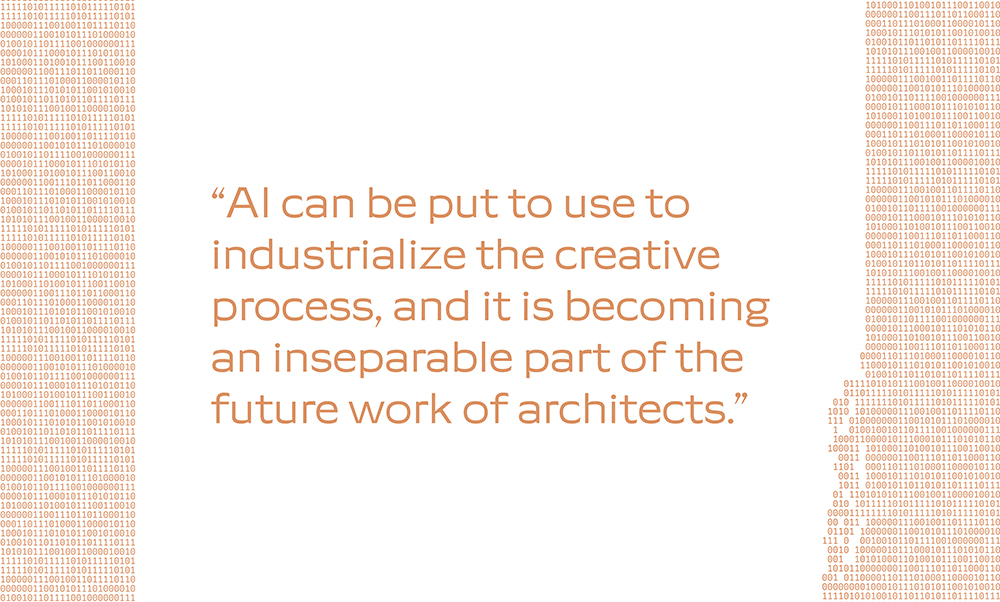Intelligence Matters
It has been estimated that, by streamlining the design process, AI will make a large proportion of architects obsolete. We should not rush to take the current guesstimates too seriously, yet it would be wise to reflect on how much of an architect’s work can actually only be managed by the human mind, writes the Editor-in-Chief Kristo Vesikansa.
This issue focuses on two significant trends that may have an irrevocable impact on how we design and implement buildings and cities – perhaps also on how we view them in the future. For one, the development of artificial intelligence will change design practices in ways that we can only try to guess at this point. On the other hand, a radical reduction in the climate emissions of construction industry is inevitably going to lead to reform the palette of materials available – and, as a consequence, a new kind of architecture will emerge.
The public discussion on artificial intelligence and its impacts on various sectors of society leapt to an all-new level just over a year ago, when applications like ChatGPT made it clear that we are no longer talking about science fiction but an ongoing technological revolution. In architectural discussions, however, the focus has remained on rather superficial or peripheral matters, such as the fact that AI enables the production of visualizations that mimic the hand of any architect living or deceased. However, the true possibilities – and potential threats – presented by the technology lie elsewhere.
It has been estimated that, by streamlining the design process, AI will make a large proportion of architects obsolete, just as is predicted to happen to many other groups of highly educated professionals, and that small agile practices will be able to manage commissions which currently require the input of dozens of architects. This would entail that the current centralization of design firms would, surprisingly, be coming to an end. However, similar predictions were already thrown around in the 1980s as architectural practices began to adopt CAD software in lieu of drawing by hand, but the actual development that followed took an altogether different route. That is why we should not rush to take the current guesstimates too seriously. Nevertheless, for future reference, it would be wise to reflect on how much of an architect’s work can actually only be managed by the human mind: 50, 20 or 5 percent?
In parallel with a reform of design work itself, an architect’s professional realm will be affected by the economic, social and cultural changes brought along by AI. Israeli historian Yuval Noah Harari, for instance, paints quite a grim picture of a future in which mass unemployment befalls most of humankind, authoritarian regimes monitor their citizens’ every move, and capital accumulates in the hands of a few megacorporations that control the data. What is the role of architecture in a world like this?
For future reference, it would be wise to reflect on how much of an architect’s work can actually only be managed by the human mind: 50, 20 or 5 percent?
To form some kind of general view of the road ahead, we have asked experts who have studied AI from various perspectives to provide their insights for this instalment of the Finnish Architectural Review. In addition to the possibilities offered by the new technology, we can read about several problematic issues, such as the unethical practices of AI companies and the huge climate emissions of data centres. Sustainable solutions need to be found to these and several other problems before we make the final leap into the era of artificial intelligence.
While the wider discussion on the societal impacts of AI has been a phenomenon of recent years, guidelines for research in the field were actually created as early as in the 1940s, and mentions dating back as far as half a century ago can also be found in the Finnish press of the effects of AI on architecture and urban planning. In our journal, discussions on the impacts of new technology on design practices have been ongoing since the 1960s. Architects back then did not have computers at their disposal, but the hope was that cybernetics, the buzzword of the time, would support the development of more rational design methods. With the adoption of personal computers in architecture firms in the 1980s, the discussion turned to the influence of CAD software on the design process and professional image, whereas the improvements in IT performance after the turn of the century seemed to shift the focus towards algorithms as the new philosopher’s stone in architecture.
Reading old volumes from those days, one cannot help but notice that the same questions seem to have plagued the minds of architects from one decade to the next: Is the modern designer shackled to information technology, or does the technology free the designer to concentrate on creative work? Does technology increase or decrease the influence and power of architects in construction projects? As can be construed from the articles provided for this issue, the same questions remain valid, even though the technology itself has advanced in leaps and bounds.
The second theme in this issue is the urgent need to develop lower-carbon and longer-lived alternatives to current building materials. This has led to a renewal of production methods, as well as material innovations and the revival of techniques that had once become marginalized as a result of industrialization. The presented projects showcase the forms that this new mindset is taking in Finnish architecture. Among the featured projects are various solid-wood structures, a multistorey residential building constructed from clay blocks, as well as a house insulated with prefabricated straw panels. Even though the primary motivation behind the material choices has been that they are environmentally friendly and resilient, the projects also illustrate that the new palette of materials also gives rise to new forms of expression – or, at the very least, to the return of once forgotten motifs. ↙




